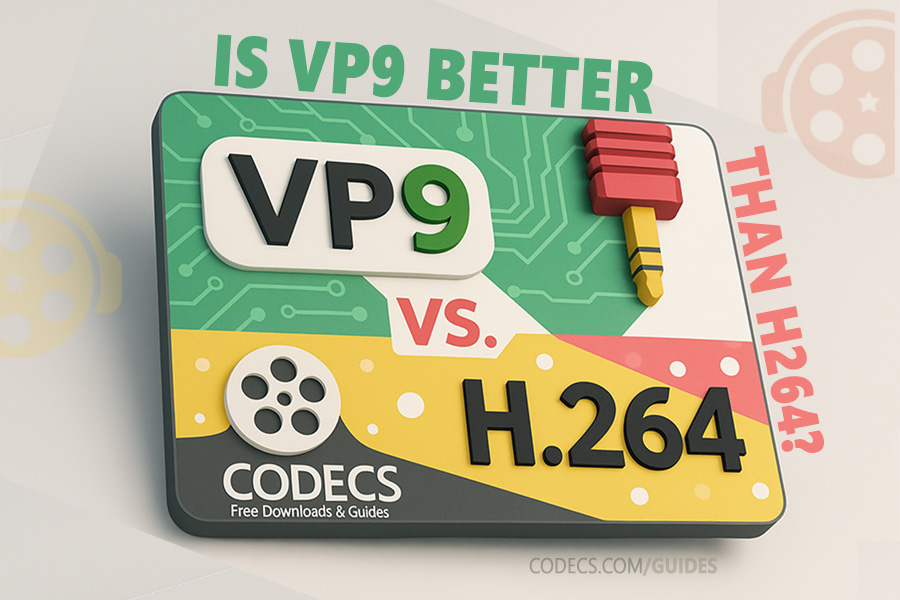Is VP9 better than H264?
A video codec compresses and decompresses digital video files, reducing their size for smoother streaming and easier storage, without significantly affecting quality.
Among the many codecs available, two popular options are VP9 Codec and H.264 (also known as AVC).
We will compare VP9 and AVC/H.264 to shed light on their respective strengths and weaknesses, helping you understand which codec might be better suited for your needs.
VP9: Google’s Open-Source Alternative for High-Efficiency Video Streaming
Developed by Google, VP9 is an open-source, royalty-free video codec designed to succeed VP8 and compete with H.265/HEVC.
It's widely adopted on platforms like YouTube and supported by modern browsers and devices.
Advantages of VP9
Superior Compression Efficiency: VP9 offers better compression than H.264, resulting in smaller file sizes without sacrificing video quality.
High-Resolution Support: Excels in handling 4K and higher resolutions, making it ideal for ultra-high-definition content.
Royalty-Free Licensing: As an open-source codec, VP9 doesn't require licensing fees, reducing costs for developers and content creators.
Disadvantages of VP9
Slower Encoding Speeds: VP9 encoding is significantly slower compared to H.264, which can impact workflows requiring rapid processing.
Limited Compatibility: While support is growing, VP9 isn't as universally compatible as H.264, potentially causing playback issues on older devices.
H.264: The Ubiquitous Standard in Video Compression
H.264, also known as AVC, is a widely adopted video codec known for its balance between quality and file size. It's supported across a vast array of devices and platforms.
Advantages of H.264
Broad Compatibility: H.264 is compatible with most devices, browsers, and operating systems, ensuring seamless playback across platforms.
Faster Encoding: Compared to VP9, H.264 offers quicker encoding times, benefiting real-time applications and faster content delivery.
Established Infrastructure: With years of widespread use, H.264 has a mature ecosystem, including hardware acceleration and extensive tool support.
Disadvantages of H.264
Licensing Fees: Unlike VP9, H.264 requires licensing fees, which can increase costs for developers and distributors.
Less Efficient Compression: H.264 doesn't compress video as efficiently as VP9, leading to larger file sizes for comparable quality.
VP9 vs. H.264: Feature Comparison
| Feature | VP9 | H.264 |
|---|---|---|
| Compression Efficiency | Higher, resulting in smaller file sizes | Lower, leading to larger file sizes |
| Encoding Speed | Slower | Faster |
| Compatibility | Growing, but not universal | Extensive, across most devices and platforms |
| Licensing | Royalty-free | Requires licensing fees |
| High-Resolution Support | Excellent for 4K and above | Good, but less efficient at higher resolutions |
Which Codec Should You Choose?
VP9 excels in terms of efficiency and compression, making it a top choice for high-resolution content and reducing bandwidth requirements.
However, its adoption is not as widespread as H.264, which boasts broad compatibility and mature encoding processes.
Choose VP9 if: You're targeting high-resolution content, prioritize smaller file sizes, and want to avoid licensing fees.
Choose H.264 if: You need broad compatibility, faster encoding, and are working within an established infrastructure.












